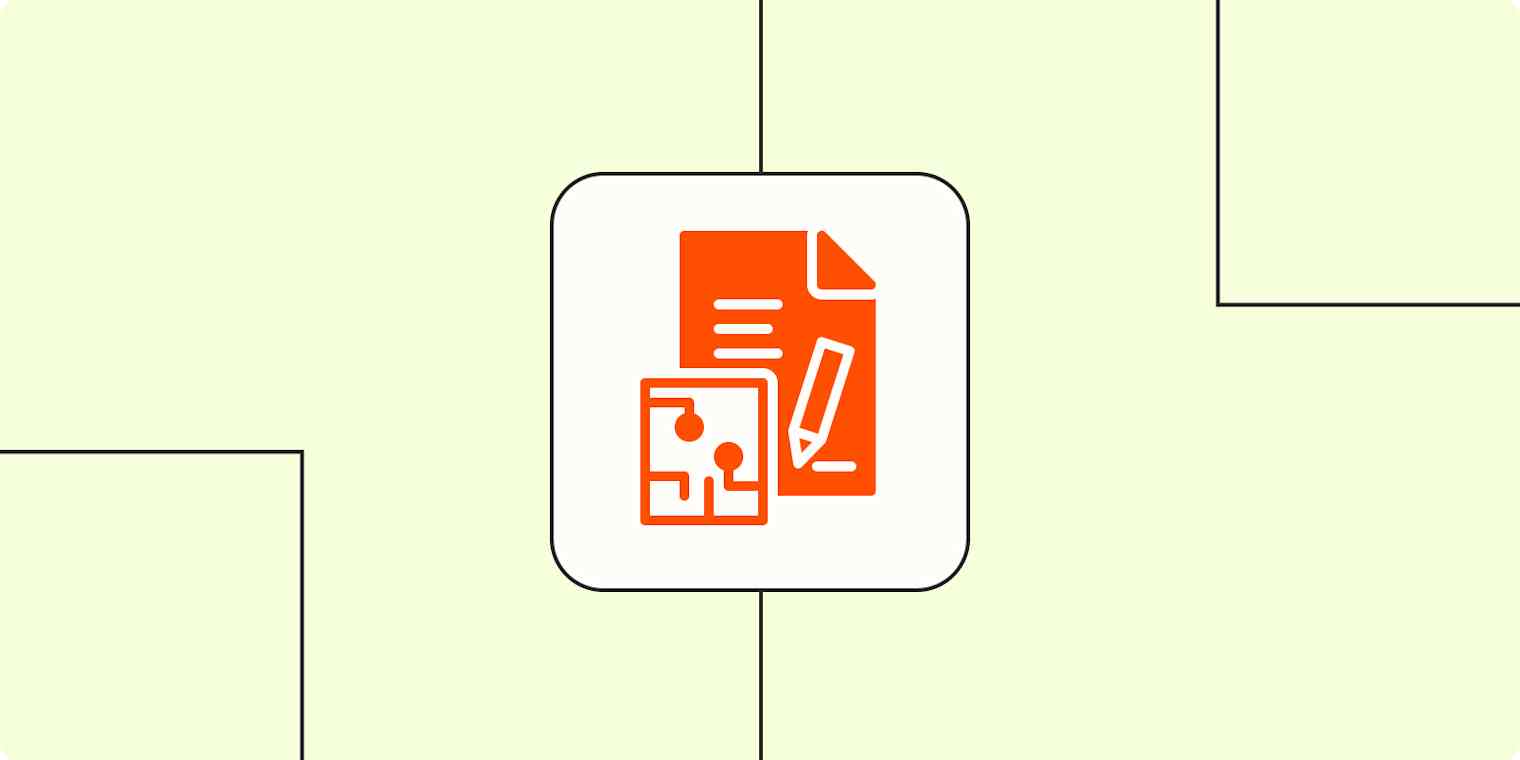AI will soon write much of what you read online, from emails to texts to video subtitles. None of it will have a disclaimer, though, and as machine learning models get better at mimicking humans and hiding their own flaws, sniffing out AI-generated content will become more and more challenging. This is where AI content detectors come in.
AI content detectors are built on the same technologies that power tools like ChatGPT. But instead of training mostly on human-written material, they're also fed patterns from datasets of artificial content, so they can learn to distinguish between the two. For someone seeking authentic, human-created experiences online, AI content detectors are the best bet.
As you might expect, AI content detectors are far from perfect, but most are skilled at spotting several common patterns found in generative AI outputs, such as an overuse of niche words and a predictable structure. At the same time, LLMs are evolving all the time, and both AI content detectors and the generators they're detecting will improve. It's just a case of whether the detectors can keep pace with the generators.
I spent considerable time testing loads of AI content detectors to narrow it down to the six best apps. Here they are.
The best AI content detectors
Sapling for accuracy
Winston AI for integrations
ZeroGPT for a free AI content detector
GPTZero for extra writing analysis features
Copyleaks for large documents
Smodin for students
What makes the best AI content detector?
How we evaluate and test apps
Our best apps roundups are written by humans who've spent much of their careers using, testing, and writing about software. Unless explicitly stated, we spend dozens of hours researching and testing apps, using each app as it's intended to be used and evaluating it against the criteria we set for the category. We're never paid for placement in our articles from any app or for links to any site—we value the trust readers put in us to offer authentic evaluations of the categories and apps we review. For more details on our process, read the full rundown of how we select apps to feature on the Zapier blog.
There are plenty of lists of the best AI content detectors, so what makes this one different? For starters, lots of lists are looking at apps that "detect and reword AI-sounding content." But I'm not looking for a strange combo of detection and generation so people can churn out AI-generated content that goes undetected. Instead, my focus is on AI content detectors that help you identify AI content—whether you're a teacher, a content manager, or anyone else who wants to be sure humans are producing the content you're reading.
Also, I didn't just read these apps' marketing materials and customer reviews. I spent dozens of hours researching and testing the best AI content detectors.
So, how do you test for AI-generated content? Well, rightly or wrongly, here's what I did.
First, I decided on a topic to test. I wanted something I knew was 100% human, so I chose a previous article I'd written: What are Gemini Gems? And how to use them.
Next, I needed some AI-generated content on the same topic, so I asked ChatGPT (GPT-4o-mini) and Claude (3.5 Sonnet) to write an article using the prompt: "Think and write like an experienced tech journalist. Write a 500-word article on what Gemini Gems are and how one can use them." Finally, I created a piece of mixed content by using the start of my human article and ending with a portion of the ChatGPT text.
So, in the end, I tested each app on four pieces of text: Human, ChatGPT, Claude, and Mixed.
As I was testing the apps, here's what I was looking for, apart from accuracy:
Ease of use: How easy is the tool to use? Are there any restrictions that might be too prohibitive? Many tools either required signing up or had buried access to the detector under heaps of menus. I prioritized tools that made detecting AI content as easy as copying and pasting.
File support: While more often than not, we copy and paste the text we want to analyze for AI authorship, the ability to scan documents has become increasingly vital now, especially if you're a teacher or a content professional.
Cross-model compatibility: Closely linked to accuracy is interpretability. For example, can the app detect AI content from multiple LLMs (e.g., GPT, Gemini, Llama, Claude, Falcon), differentiate between AI, human, and mixed (AI + human) content, or produce sentence-level AI highlighting and reporting?
Pro features: I looked for any additional functionality, such as a browser extension, a plagiarism checker, an API, or integrations with other tools like Google Docs, Microsoft Word, Canvas, Blackboard, or other classroom applications and LMS platforms.
Scalability: Finally, you'll want to know how much content the app can detect without compromising accuracy and remain affordable. In other words, is the tool good for 1,500 words tops, or can it analyze larger volumes?
Overall, I whittled the list down from over 18 possibilities to the six best AI content detectors.
The best AI content detectors at a glance
Accuracy | Extra features | Pricing | |
|---|---|---|---|
⭐⭐⭐⭐⭐ Basically perfect (and confident) | Public link creation, regular updates, Chrome extension, custom GPT | Free plan available for up to 2,000 characters (about 300 words) at a time; premium plans start at $25/month for 100,000 characters | |
⭐⭐⭐⭐ Did well overall | Plagiarism checker, readability score, ability to scan documents, pictures, and handwriting (OCR), browser extension for instant scanning, custom GPT, integrates with Zapier | Plans start at $12/month for 80,000 words when billed annually | |
⭐⭐⭐⭐ Above average, but struggled with ChatGPT-produced text | Messaging bots, multi-language and multi-file batch support | Free plan available for up to 15,000 characters (~2,500 words) at a time; premium plans start at $10/month | |
⭐⭐⭐⭐⭐ Solid on all tests | Chrome extension, plagiarism checker, API access, integrations | Basic free plan for scanning up to 10,000 words per month; premium plans start at $10/month | |
⭐⭐⭐⭐⭐ Solid on all tests | Detection profile customization, document scanner, plagiarism checker, report sharing | Free for 5 scans; premium plans start at $10/month for 250 credits (1 credit is 250 words) | |
⭐⭐⭐⭐ Scored quite well on the tests but not as confident with ChatGPT responses | Plagiarism checker, summarizer, rewriter, and writer (generative AI) | Limited free plan includes 5 free weekly uses; premium plans start at $12/month |
The best AI content detector for accuracy
Sapling

Sapling AI's utilitarian interface may not look like much, but it's one of the more reliable detectors on this list. What sets it apart is that it's updated regularly to support new, emerging models like DeepSeek, unlike others whose performance tends to dip over time.
Sapling accuracy: Near-perfect and confident
Sapling scored top marks for accuracy, and its pragmatic design also ensures it's fast and efficient. These were the results:
Human: 0.00% Potentially AI-generated
ChatGPT: 100% Potentially AI-generated
Claude: 100% Potentially AI-generated
Mixed: 53% Potentially AI-generated
How it works
To use Sapling AI, all you have to do is visit its website and paste your content in the text box or upload your document (PDF and DOCX). As soon as you do that, its engine will process it (without you even clicking the Check score button) and instantly reveal the score.
There's plenty more to like about Sapling. Even in the free version, it can break down which sentences of your text are specifically AI-generated. Plus, you can create a public link to the results and share it with others to certify your content.
Pro features:
Chrome extension
Sentence analysis
Public link for certification
File uploads
Sapling AI detector pricing: The free version limits you to 2,000 characters in one go. The Pro plan ($25/month) pushes that up to 100,000 characters.
The best AI content detector for integrations
Winston AI

Winston AI is a dedicated AI content detector that works with GPT-4, Google Gemini, and other LLMs.
Winston AI accuracy: Winston AI did well on nearly everything. Its Claude detection accuracy was a miss at times, but in most scans, it was accurate.
Human: Probably 100% human.
ChatGPT: Winston has detected the text as 0% human. It is highly probable that an AI text generation tool was used
Claude: Probably 1% human.
Mixed: Winston has detected the text as 55% human. Our assessment is that an AI text generation tool was unlikely used for the majority of the text, but that part of the text could have been AI-generated. (Most of the text was correctly identified.)
How it works
You'll need to create an account to use Winston AI and get a 14-day free trial. Once that's set up, you have three options for checking your content: paste your text, upload a file, or import from a URL.
Winston AI requires a minimum of 500 characters to test, and then lets you know, on a scale of 0-100, the probability that the text is human or AI-generated. You also get AI sentences highlighted in the results and the (premium) option to generate a shareable PDF report.
I also like that Winston AI offers a full-fledged dashboard, where you can access all your previous analyses, certify your website as human-made, and even scan AI-generated images.
Extra features
Plagiarism checker
Image scan
Ability to scan documents, pictures, and handwriting (OCR)
Lots of browser extensions (Microsoft Edge, Opera, Firefox, Google Chrome)
Extensions
Winston AI also integrates with Google Classroom and WordPress, and businesses can also access the tool via an API to link it with their systems. Or, you can just integrate Winston AI with Zapier to connect it to all the other apps you use, so you can automate your AI content detection workflows. Here are some examples to get you started.
More details
More details
Winston AI pricing: The advertised free account is actually a free trial, limited to 2,000 words over 14 days. Premium plans start at $12/month (80,000 words) if billed annually or $18/month. You can also get a custom plan if you need to scale further.
The best free AI content detector
ZeroGPT

ZeroGPT is a freemium AI content detector that lets you scan texts right from messaging apps. You can ping its WhatsApp or Telegram bot to not only detect AI-generated content but also perform a host of other actions like summarize and translate.
ZeroGPT accuracy: ZeroGPT was above average, but it tended to struggle with ChatGPT-produced texts.
Human: 0% AI
ChatGPT: 74% AI
Claude: 100% AI
Mixed: 60% AI
How it works
ZeroGPT has a straightforward interface: you can simply paste your text on its website without signing up or uploading a file. Even on the free (albeit ad-filled) version, ZeroGPT offers sentence-by-sentence analysis, and a number of other Generative AI tools like a translator and an email helper.
Pro features:
WhatsApp and Telegram bots
Multi-language support
Batch files support
ZeroGPT pricing: On ZeroGPT's free plan, you can detect snippets of up to 15,000 characters. For more, you'll have to upgrade to the $10/month subscription. Premium perks like the messaging bots are restricted to the $27/month Max plan.
The best AI content detector for extra writing analysis features
GPTZero

GPTZero specializes in detecting content from GPT, Gemini, Claude, and Llama models. It's one of the oldest tools on this list, and that shows: it comes with a mature, user-friendly interface that's easy to navigate and understand. It uses what it calls a seven-layer detection model to determine AI-generated content. Probably not as tasty as the dip.
GPTZero accuracy: GPTZero did well in all tests, but it was thrown off by the mixed content, and though it accurately spotted the AI paragraphs, it classified the entire text as human instead of mixed.
Human: 100% human. We are highly confident this text is entirely human.
ChatGPT: 100% AI. We are highly confident this text was AI-generated.
Claude: 100 AI. We are highly confident this text was AI generated.
Mixed: 60% human / 40% AI. We are uncertain about this document. If we had to classify it, it would likely be considered human.
How it works
Like the other apps, you can copy/paste the text you want to analyze (min 250 / max 5,000 characters) on GPTZero's homepage or upload a file. The scan runs quickly and presents the results on a more comprehensive screen.
In the Scan Summary, there's a Document Classification—e.g., "human"—and a Probability Breakdown, showing a sliding scale from human to mixed to AI. You can keep the report private, share it, or download a copy. The scan results are also stored in your dashboard, so you can always refer back to them.
The Basic Scan section highlights sentences that are likely AI-generated. Premium plans can also access the Deep Scan, which has color-coded highlights for the different AI and human segments.
Finally, in the Writing Analysis section, you get a detailed breakdown, including readability, average sentence length, and simplicity. The analysis also includes measures of perplexity and burstiness—two AI scoring parameters:
Perplexity measures how complex the text is. If GPTZero is "perplexed," it's more likely to be human-written. Otherwise, it's likely AI-generated.
Burstiness evaluates the variations of sentences. AI bots tend to stitch sentences together at a predictable uniform length, while humans write with greater variations.
Extra features
Google Chrome extension (named Origin)
Plagiarism checker
API access for large organizations
Several integrations, including Google Docs and Microsoft Word add-ons, Canvas, Blackboard, and other classroom applications
GPTZero pricing: There's a basic free plan for scanning up to 10,000 words per month and 7 scans per hour. Premium plans start from $15/month (150,000 words), rising up to $46/month for organizations and enterprises (500,000 words) with advanced data security and SSO.
The best AI content detector for large documents
Copyleaks

Copyleaks is an advanced AI content detector tailored for pros. It can tell you whether a text is AI generated, and it also highlights the patterns and vocabulary that make it sound AI rather than human.
Copyleaks accuracy: Copyleaks was solid on all tests and matched the top performer, Sapling AI, in performance. Although it was a little sluggish to respond.
Human: 0% AI
ChatGPT: 99% AI
Claude: 99.5% AI
Mixed: 60% AI
How it works
Copyleaks has a busy dashboard where you can manage all your scans and uploaded documents. To begin a new analysis, you can paste text, upload files or code, input a URL, and more.
You can also customize the way it runs a scan. For example, you can omit elements like a table of contents and personalize the detection sensitivity, based on the existing context. If you suspect the text was lightly modified with AI-generated excerpts, for example, you can set the sensitivity to 2. But honestly, it made little difference in the performance in my tests.
Copyleaks' document analysis is also better than the others I tested. It produces a neatly laid out breakdown with unique AI insights, like how often a certain phrase appears in AI datasets.
Pro features:
Detection profile customization
Document scanner
Plagiarism checker
Report sharing
Copyleaks pricing: Copyleaks offers 5 free scans. The premium plan starts at $10/month for 250 credits (1 credit is 250 words).
The best AI content detector for students
Smodin

Smodin offers a suite of writing tools, including an AI content detector that works with ChatGPT, Gemini, and other AI generators.
Smodin accuracy: Smodin scored quite well on the tests. It correctly identified three content sources but wasn't as confident at times with ChatGPT content.
Human: Content is likely Human-written. (100%)
ChatGPT: Content is likely AI-generated. (70% of text is likely AI-generated.)
Claude: Content is likely AI-generated. (100%)
Mixed: Content is likely Human and AI. (56% human, 44% AI-generated.)
How it works
Like the other apps, Smodin is easy to use: simply paste your text into the input box or upload a file. You can input up to 5,000 characters on the free plan and up to 50,000 characters on the Ultimate plan, with an option to scale further on a custom enterprise plan. The on-screen results highlight AI-generated segments and sentences.
Extra features
Plagiarism checker
Summarizer, rewriter, and writer (generative AI)
Education-focused features, like an AI homework helper and grader
Smodin pricing: The limited free plan includes 5 free weekly uses. Paid plans with unlimited usage start at $12/month (annual billing).
Should you use (and trust) an AI content detector?
The AI content landscape is changing constantly. Although AI detection tools are improving, they still have limitations. Take these results, for example. In some cases, they can't distinguish between highly sophisticated AI-generated text and human-written text. As AI content generation tools develop ways to sound more human, content detection models need training on more examples. It's a proverbial game of cat and mouse.
In short, AI content detectors, like AI content generators, are imperfect, so tread carefully and use common sense.
Related reading:
This article was originally published in July 2023 and has also had contributions from David Hartshorne. The most recent update was in April 2025.








